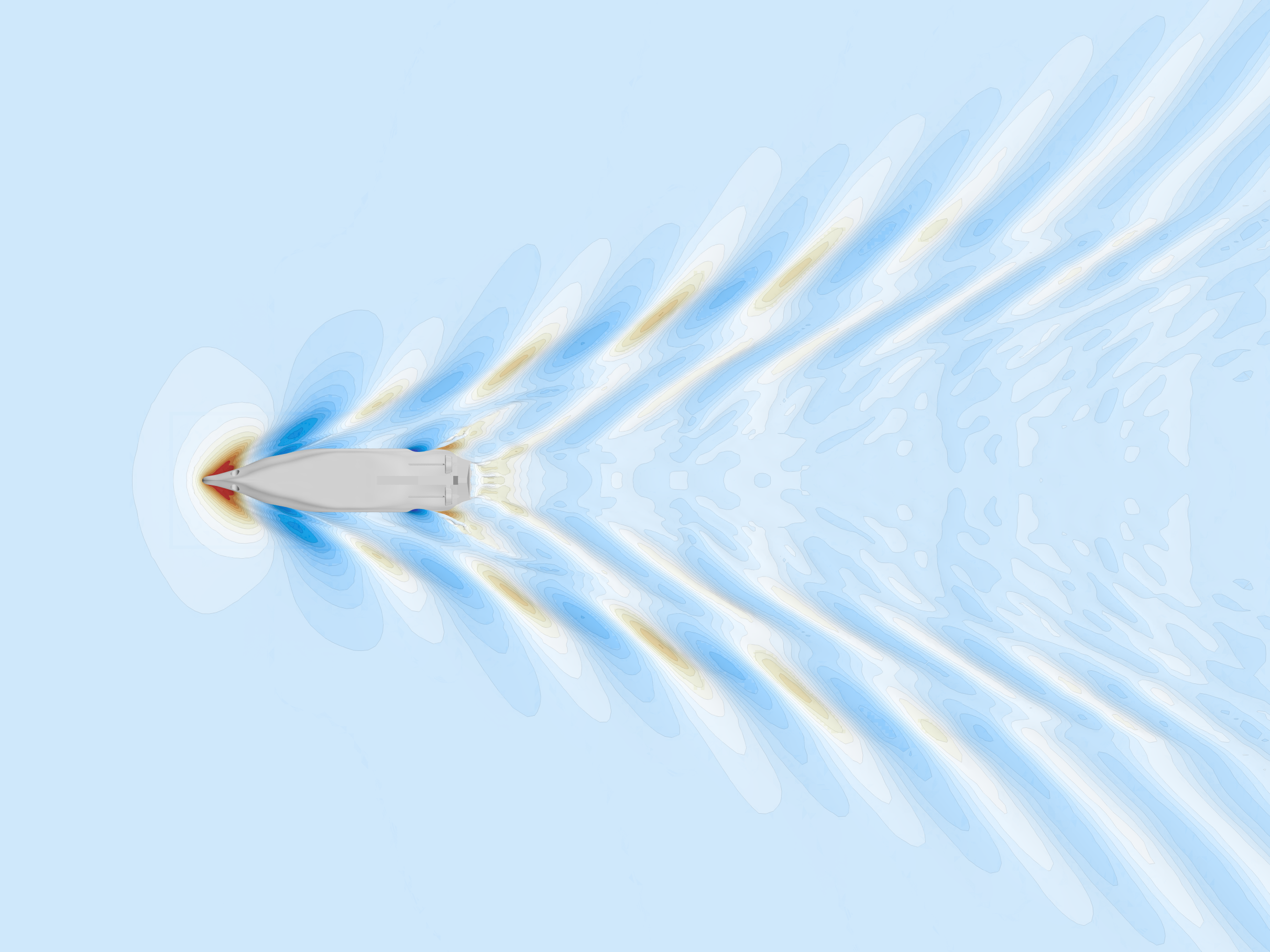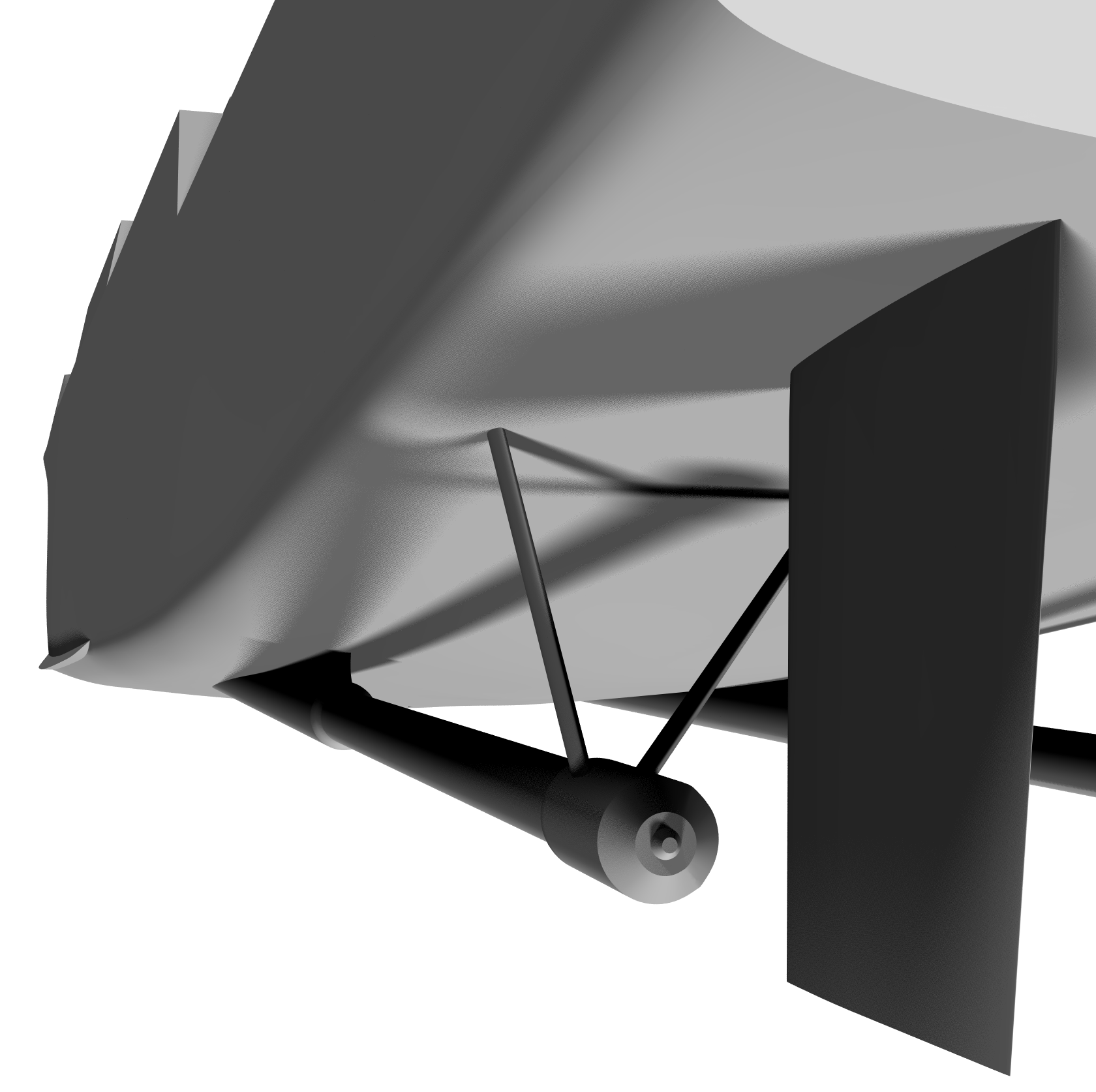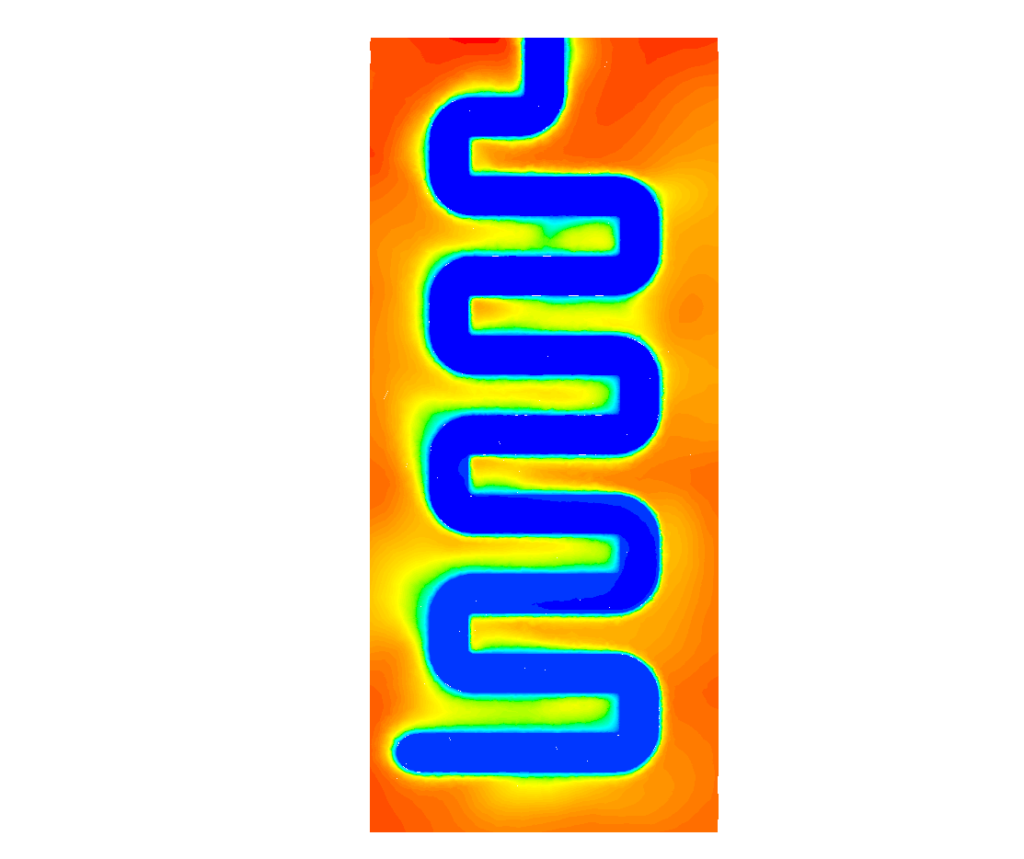Services
Calm Water Performance
Calm water performance prediction is crucial for achieving an optimised efficiency by anticipating trim across different loading conditions and refining hull and appendage design. This dual approach ensures streamlined hydrodynamics, minimizing drag and maximizing speed while providing valuable insights into power usage for optimal engine selection. Additionally, incorporating Energy Efficiency Existing Ship Index (EEXI) and Energy Efficiency Design Index (EEDI) calculations further enhances the vessel's environmental sustainability, guiding the selection of energy-efficient components and operational practices.


Seakeeping & Manoeuvring
Seakeeping and manoeuvring performance prediction is crucial for ensuring the vessel's safety and stability at sea. In real sea states with varied wave characteristics, accurate predictions help evaluate Response Amplitude Operators (RAOs), accelerations or green water, providing insights into potential discomfort and seasickness for passengers and crew. Additionally, adherence to ITTC procedures in predicting turning circles, zig-zag patterns, and other manoeuvres aids in optimizing the vessel's handling and responsiveness, contributing to overall maritime safety and operational efficiency.
Propellers
Predicting propeller performance is essential for optimising boat efficiency by anticipating cavitation, propeller/hull interaction, and enhancing the overall hydrodynamic efficiency, resulting in improved fuel consumption and sustainable performance.


Aerodynamics
The aerodynamic evaluation of a ship can be crucial, addressing challenges such as high-speed resistance, lateral resistance for station keeping or docking, ensuring efficient exhaust and ventilation in engine rooms, and enhancing on-deck comfort, collectively contributing to improved overall performance and operational effectiveness.
Hull & Appendages Design and Optimisation
Efficient design and optimization of a ship's hull and appendages are essential, encompassing considerations such as minimizing drag for improved speed, optimizing appendage placement for effective maneuvering, streamlining the hull to enhance fuel efficiency, and strategically designing appendages to reduce resistance and turbulence, collectively contributing to the overall hydrodynamic efficiency and operational performance of the vessel.


Special cases
Our expertise extends beyond ship propulsion systems; we have the capability to analyse a diverse range of fluid dynamic problems.
